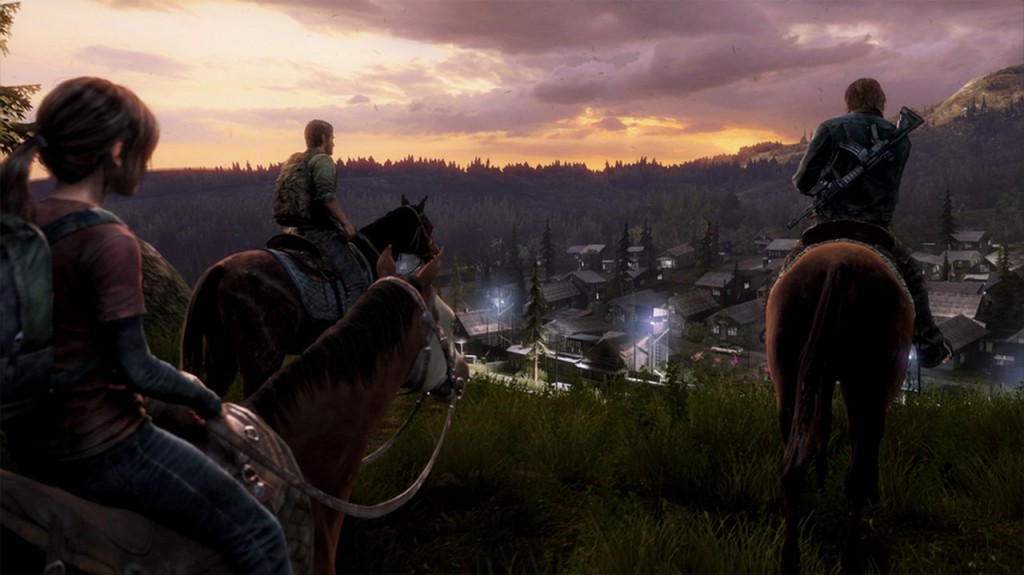
This console generation’s certainly been…well, is interesting the right word? Nintendo outed an underpowered machine that many people thought was a touchpad add-on for the Wii. Development costs spiraled upwards with games like Grand Theft Auto V eating through budgets larger than some third world economies. PC increasingly became a mainstream space. Hardware like the GTX 970 offered eye-opening levels of performance without price-tags that broached the “elitist” label, while the Pentium G3258 AE took us back to a time when power-users could tinker to shape their own bang-for-buck propositions.
But perhaps, what has defined this console generation more than anything else is compromise: Both the PS3 and Xbox 360 were behemoths for the time: The Xbox 360’s ATI-designed Xenos GPU outdid ATI’s own 2005 and 2006 flagships, and the PS3’s 8-SPU design anticipated the transition to wide, parallel, multithreaded computing by years. These were high-end machines, expensive to manufacture and sold at a loss, the idea being that console games retailing at $60 a pop would recoup the hardware loss and drive long-term profit. Maybe it had to do with the 2008 recession, the aftereffects of which were still being felt in 2013. It could’ve been on account of the rise of smartphone gaming, or the freemium model where hardware vendors don’t get anything off game sales because of the $0 price of admission.
Whatever the reason was, both Microsoft and Sony abandoned their loss-leader strategy with the PS4 and Xbox One. They began selling hardware at a profit—but to actually break even while hitting reasonable retail prices, they had to compromise big. The bulk of that compromise fell on the eighth-gen consoles’ hardware spec: In late 2013, the PS4 and Xbox One arrived with what amounted to lower-mid-range GPUs based on the already-ageing GCN architecture, and CPUs that could charitably be described as anemic. PC hardware grew by leaps and bounds to the point that budget cards like the $150 GTX 950, and entry level processors like the i3-6100 are already orders of magnitude more powerful than the console hardware spec. Consoles are fixed platforms, and regardless of optimizations and low-level access, there’s only so much a particular console platform can offer.
"Both the PS3 and Xbox 360 were behemoths for the time: The Xbox 360’s ATI-designed Xenos GPU outdid ATI’s own 2005 and 2006 flagships, and the PS3’s 8-SPU design anticipated the transition to wide, parallel, multithreaded computing by years."
The 360 and PS3 were “future-proofed” with their high-end internals and it was only towards the very end of their 10-year cycles that compromises such as sub-native resolutions and 20-25 FPS framerates became the norm rather than the exception. With the PS4 and Xbox One, that barrier was hit within a year—As early as 2014, ambitious titles like Assassin’s Creed: Unity crashed and burned on consoles, with sub-30 FPS updates and 1600×900 framebuffers.
Consoles are the least common denominator in game development terms, and the console audience is the largest, by far. With that in mind, any game a AAA studio develops must run on console. With the PS4 and Xbox One both hitting brick walls in terms of performance, there are only two possible outcomes for the future: Either game complexity—not just in terms of visuals, but in terms of scope, AI simulation, everything—has to plateau, in which case we’re looking at another 5 years of 2014-era games. Or the console hardware itself needs to be booted up a notch on the ladder.
As hard to believe as it may be, a mid-cycle console hardware refresh is actually happening—at least as far as Sony’s PS4 platform is concerned. We’ve yet to receive official confirmation, the PS4 Neo’s a leaky boat if there ever was one. Leaked documentation points to the Neo featuring 2 times the graphics horsepower of the original PS4, a 31 percent increase in CPU performance, and faster GDDR5 RAM. But how much of a difference are these specifications going to make for the end-user? Is the PS4 Neo going to be a worthwhile upgrade if you’re already a PS4 owner? Is it enticing enough to convince fence-sitters to jump onboard the console bandwagon instead of building budget gaming PCs? And crucially, is it enough of an upgrade that it’ll stave off the hardware plateau the PS4 and Xbox One are racing towards all too quickly? Let’s have a look at PS4 Neo hardware spec, part by part:
The CPU—Still a Bottleneck
"The bottom line here is that a CPU-side bottleneck, of the kind that the PS4 Neo will have, will place an upper barrier on the depth and complexity of game experiences. Sure The Witcher 3’s sprawling landscapes and handcrafted quests are a marvel. But why do townspeople move around like clockwork robots? Why are non-essential NPCs so…paper-like?"
The PS4 Neo’s CPU is set to gain a 31 percent increase in CPU performance over the original PS4, thanks to a clockspeed bump up to 2.1 GHz. A 31 percent increase in CPU power may look great on paper, but reading between the lines, the Neo’s CPU gains aren’t as straightforward. For one, the Neo uses the very same Jaguar CPU found in the PS4. AMD’s Jaguar architecture was built with a low power/low performance profile in mind. Entry-level netbooks and Windows tablets are the target devices for Jaguar—AMD’s all-in-one APU designs with Jaguar CPU cores and integrated Radeon graphics are a great value proposition for low-profile computing. But with the low clockspeeds and terrible IPC (instructions per cycle), a Jaguar CPU is about as far from ideal as it’s possible to get for a gaming machine, unless you’re looking to cut costs.
While the Neo’s processor is certainly an upgrade over the PS4, this a case of the Neo scoring an easy win just because the bar was set so low to start off with. The Neo runs 8 Jaguar cores at 2.1 GHz. There are longer-term implications for this design choice:
Unlike Intel, which invested R&D dollars towards developing stronger, more efficient processor architectures, AMD bet the barn on wide, multi-core designs—spreading the workload over multiple, less efficient processor cores. This is a sound strategy in theory, but in practice, writing multi-threaded code, to take advantage of wider architectures is complex. It’s much easier for code to take advantage of fewer, stronger cores—writing properly multi-threaded code that fully-utilizes eight cores is more of a human challenge than a technical hurdle, and while that human element is there, the CPU bottleneck isn’t going to go anywhere.
The CPU handles physics modelling and the simulation aspects of games—the complexity of the AI and other dynamic, emergent aspects—procedurally generated landscapes in Minecraft are an example of a CPU-intensive task. The bottom line here is that a CPU-side bottleneck, of the kind that the PS4 Neo will have, will place an upper barrier on the depth and complexity of game experiences. Sure The Witcher 3’s sprawling landscapes and handcrafted quests are a marvel. But why do townspeople move around like clockwork robots? Why are non-essential NPCs so…paper-like? Simply put, it’s because neither the PS4 nor the Xbox One had enough free CPU cycles to process dynamic, simulation-based events, and advanced AI.
Ashes of Singularity is a PC-exclusive RTS game. It’s not very pretty, but it tanks on anything less than an i5 paired with a high end GPU. Why? Ashes features one the most complex AI simulations found in a game. To put it simply, you need a lot more processing grunt than either the PS4 or PS4 Neo can offer, in order for games to go deep, to simulate human-level interactions, and not just add a fresh lick of paint on top. With that being said, even if the PS4 Neo exclusives materialize at some point (and design documentation says that Sony doesn’t want this to happen), don’t expect Neo experiences that are substantially deeper and more complex than what’s already on offer.
Memory Bandwidth—Respectable Gains Will Raise the Bottom Line
"To an extent, the PS4 Neo’s memory bandwidth gains will help it hit 1080p in games the PS4 struggles with at subnative resolutions. Also, with 1080p being the new “minimum,” supersampling AA may be on the cards for the PS4 Neo—less intensive titles can downscale to 1080p from higher resolutions such as 2560×1440."
The PS4 Neo is set to receive a 24 percent bump to memory bandwidth courtesy of new 7.0 Gbps GDDR5 memory modules. This will boost memory bandwidth up to 218 GB/S, from 176 GB/S on the original PS4. What are the likely implications of this? They’re certainly not earth-shattering. Modern games are bound much more by shader and ROP limitations than by memory bandwidth.
Take the Radeon Fury X for instance. AMD’s flagship rocks 4GB of HBM memory running at an eye-watering 512 GB/S. The GTX 980 Ti has scarcely two-thirds the memory bandwidth, at 336 GB/S. Yet, the 980 Ti dominates in benchmarks, especially at lower resolutions—this is where things get interesting: Memory bandwidth scales somewhat with resolution—the more bandwidth you have at your disposal, the less of hit it takes to run at higher resolutions, though, again other factors are typically much more important.
The Fury X takes the lead when running higher resolutions because of its tremendous amount of memory bandwidth. But a 5 FPS performance gain isn’t much to write home about when neither card can hit 30 FPS at 4K in many games. What does this mean for the PS4 Neo? Sony’s developer documentation makes it clear that 1080p is the “minimum” resolution that games can run at on the Neo. A 24 percent gain in this area isn’t much, but when hitting 1080p/30 FPS is a challenge, every frame matters. To an extent, the PS4 Neo’s memory bandwidth gains will help it hit 1080p in games the PS4 struggles with at subnative resolutions. Also, with 1080p being the new “minimum,” supersampling AA may be on the cards for the PS4 Neo—less intensive titles can downscale to 1080p from higher resolutions such as 2560×1440. Combined with post-AA this can lead to noticeably fewer jaggies in many games on the Neo.
The GPU—Polaris and Real Performance Gains
"The PS4 Neo’s design is extremely “top-heavy.” It pairs what’s still a very weak Jaguar-based CPU with a very strong graphics component. The issue here is that the CPU will struggle to keep pace with the GPU, making it much more difficult to hit higher framerates."
The PS4 Neo’s GPU upgrade is the single standout spec improvement on offer. At this point, it is not clear as to whether the Neo will be using a GPU based on AMD’s upcoming Polaris architecture, or if we’re looking at an older, but scaled-up semi-custom design. The PS4 Neo’s GPU is to feature 36 CU clusters—totaling 2,304 shader cores. The theory that the Neo’s GPU is based on Polaris comes from this number: AMD doesn’t have any desktop or mobile part shipping with 36 CUs. There’s a 32 CU part—the R9 380X, a 38 CU part—the R9 290. At the higher end, there are 64 CU parts—the Fury X and Fury Nano. But there’s no current AMD GPU that features 36 CUs.
Meanwhile, leaked Polaris specifications point to a Polaris card—Polaris 10 specifically—which features just that number. More tellingly, AMD themselves recently claimed to have secured three major “design wins,” for semi-custom chip designs this year. Polaris is new. It’s built on the (new) 14nm process. If AMD’s own early Polaris demos are true, it’s set to be extremely energy efficient, which would be ideal to stick within console TDP limits. It would be ambitious and exactly the opposite of what Sony did when it re-purposed AMD’s ancient Pitcairn GPU for the original PS4. And that’s good news.
What does this mean for games? With over twice the GPU grunt of the PS4, the PS4 Neo should have absolutely no issue hitting a consistent 1080p/30 FPS update in AAA games, where the PS4 struggles at times to output 900p/30. 1080p/60 FPS is another question, entirely. This is where the CPU bottleneck we mentioned rears its head. The PS4 Neo’s design is extremely “top-heavy.” It pairs what’s still a very weak Jaguar-based CPU with a very strong graphics component. The issue here is that the CPU will struggle to keep pace with the GPU, making it much more difficult to hit higher framerates.
A good example in the PC space would be pairing a GTX 970 with a Pentium G3258. The 970 by itself is more than fast enough to power through most games at 1080p/60 FPS. But the G3258 is simply unable to issue draw calls to the 970 fast enough—this causes framerate spikes—second to second fluctuations from 50-60 FPS down to the low 30s, leading to a very inconsistent experience. The PS4 Neo should, however,be able to hit 1080p/60 FPS with ease in games that go light on the CPU—corridor shooters like Call of Duty should hand in a much more consistent 1080p/60 FPS experience than on the PS4. The massive GPU gains may also translate into better onscreen effects. While the scope and complexity of open world titles are more dependent on the CPU, high quality lighting, particle effects, texture filtering, and high-resolution shadowing are all GPU-intensive tasks that the PS4 Neo will be able to handle a lot better than original PS4. Because of CPU-side bottlenecks, many titles may target 1080p/30 FPS on the Neo and that frees up a lot of headroom to push intensive GPU-bound effects. Apart from what we’ve just mentioned, high quality ambient occlusion, global illumination and soft shadows are some of the many eye-candy effects we’ll see on the Neo.
Upscaling is another possibility to make use of the Polaris GPU’s extra muscle. They’re nicknaming Neo the “PS4K” for a reason: The PS4 Neo is meant to able to handle 4K content. While a native 4K experience is almost certainly off the cards for AAA games, considering that highest-end graphics cards of today struggle at that resolution, upscaled 1440p would certainly be more attractive on 4KTVs than blowing up a 1080p image.
Having a 4KTV and a 980 Ti, I can attest to this personally: Dark Souls III looks positively muddy when upscaled from 1080p. Though native 4K is, of course, sharper by far, upscaling from 1440p offers great image quality without placing as much strain on the GPU—with the 980 Ti and Fury X consistently hitting 60 FPS at 1440p, it wouldn’t be surprising to see the PS4 Neo’s Polaris-based GPU make a good effort at 1440p/30 in upcoming AAA games. Also,sidescrollers and simple Indie games may actually hit 4K/30 FPS on the Neo, making 4K gaming a reality in the console space.
Sony’s Content Parity Policy—Limiting What the Neo Can Do
"The PS4/PS4 Neo divide is similar to the difference between building a budget PC rig and an upper mid-range rig: You can turn the settings up a notch and get a smoother framerate but ultimately you’ll still be playing the same game."
Despite the substantial GPU-side gains reasonable additions to memory bandwidth and CPU power, ultimately Sony’s apparently platform parity policy will decide how much of a difference the Neo will actually make. Per leaked developer recommendations, Sony requires that all games that work on the Neo must run on the PS4, and that both the “base” and Neo versions of the games must have feature parity—that means gameplay-wise, the Neo version cannot do something the PS4 can’t. This limits the real benefits of the Neo to higher resolutions, stable framerates, and fancier eyecandy.
In this light, the PS4/PS4 Neo divide is similar to the difference between building a budget PC rig and an upper mid-range rig: You can turn the settings up a notch and get a smoother framerate but ultimately you’ll still be playing the same game. We wonder, though, if Sony’s going to stick to its guns on platform parity in the long run: What’s going to happen to the Neo when the PS5 is announced? Will it still be running trumped-up PS4 games? Or will it be a bridge to the true next-gen? Only time will tell.


















